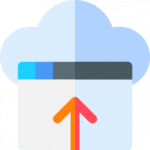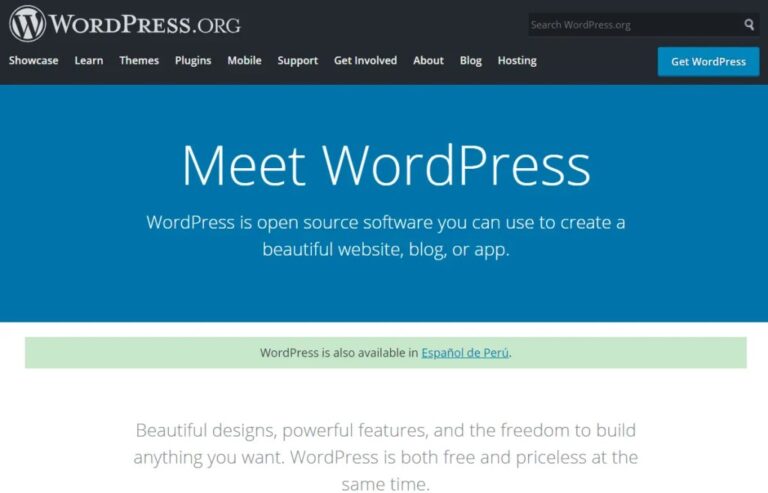Looking to enhance your understanding of control structures in PHP for implementing logic in WordPress? This article is the perfect guide for you.
We explore the basics of control structures and mastering PHP control flow, covering everything you need to know. Whether you want to learn about common PHP control structures like if() statements or delve into less common ones, this article provides practical examples and resources to help you on your journey.
Let’s dive in!
Key Takeaways:
1.Control structures in PHP are essential for creating logical and dynamic WordPress websites.
2.Understanding the basics of control flow and the various types of language control flow in PHP is crucial for effectively implementing control structures.
3.Using if() statements and while() and foreach() loops are common control structures, but exploring lesser used structures and mastering control flow can enhance the functionality and efficiency of WordPress sites.
Introduction to Control Structures in PHP
Introduction to Control Structures in PHP provides a fundamental understanding of how PHP code flows and executes based on specified conditions, loops, and functions.
Control structures in PHP play a crucial role in directing the program flow, ensuring that different code blocks execute based on conditions. With constructs like if statements, switch cases, and loops such as for, while, and foreach, PHP offers a robust mechanism to control the flow of the program execution. These structures not only enhance the readability of the code but also allow developers to efficiently manage the logic within their applications, enabling them to perform tasks more efficiently.
Exploring the Basics of Control Structures
Exploring the Basics of Control Structures delves into foundational programming concepts such as imperative syntax, loop mechanisms, and switch statements in PHP.
Imperative programming paradigms are at the core of control structures in PHP, outlining the sequence of commands in a clear and organized manner. Understanding the syntax conventions is crucial for writing efficient and error-free code.
The use of switch statements allows developers to execute different code blocks based on the value of a specific expression, providing a concise alternative to multiple if-else conditions.
- In terms of looping mechanisms, PHP offers various options such as for, while, and foreach loops, each tailored for specific scenarios.
Understanding PHP Control Flow
Understanding PHP Control Flow involves grasping the interplay of control structures, loops, and patterns like the Fibonacci series within PHP programming.
Control structures in PHP, such as if-else statements and switch-case statements, dictate the flow of execution based on certain conditions. Loops, like for, while, and do-while loops, are integral for repeating a block of code until a specific condition is met.
In terms of the Fibonacci series, a classic example of utilizing loops in PHP, the program calculates the next number in the sequence by summing up the two preceding numbers. This demonstrates how control structures and loops work together to create efficient and dynamic solutions in PHP programming.
Overview of PHP Control Flow
An Overview of PHP Control Flow provides a comprehensive look at how code execution flows through control structures, loops, and statements in PHP scripts.
Control flow in PHP is crucial for determining the sequence in which statements are executed within a script. PHP offers a variety of control structures, such as if statements, switch cases, and loops like for, while, and do-while.
These control structures allow developers to manipulate the flow of their code based on different conditions or repeat certain actions multiple times until a specific condition is met.
Understanding how these control structures work together is essential for creating efficient and dynamic PHP scripts.
Types of Language Control Flow in PHP
Various Types of Language Control Flow in PHP encompass mechanisms like if-else conditions, function calls, and return statements that regulate program execution.
These control flow mechanisms play a crucial role in determining the logic and decision-making within a PHP script. When an if-else condition is encountered, the script evaluates a specified condition and executes different code blocks based on whether the condition is true or false.
Function calls enable the segregation of code into reusable units, enhancing code organization and facilitating easier maintenance.
Return statements are used to send a value back from a function to the calling code, allowing for dynamic data transmission and overall script efficiency.
Common PHP Control Structures
Common PHP Control Structures include if-else conditions, for loops, while loops, and do-while loops, offering diverse ways to control program flow in PHP applications.
When using if-else conditions in PHP, the code checks a specified condition and executes different blocks based on whether the condition is true or false.
For for loops, a block of code is repeated a specified number of times, usually iterating over a range of values.
While loops will continuously execute a block of code as long as the specified condition is true, allowing for dynamic looping. On the other hand, do-while loops guarantee that the block of code inside will be executed at least once before checking the condition.
if() Statements in PHP
if() Statements in PHP enable developers to execute specific code blocks based on predefined conditions, enhancing the flexibility and decision-making capabilities of PHP scripts.
In PHP, the if() statement evaluates a specific condition and executes a block of code if that condition is true. It serves as a fundamental building block for implementing conditional logic in PHP scripts, allowing developers to control the flow of the program based on different scenarios. The if() statement can be combined with other conditional statements such as else if() and else to handle multiple conditions effectively. This powerful feature give the power tos developers to make dynamic decisions within their PHP scripts, thereby enhancing the overall functionality and interactivity of their applications.
Using if() and elseif() Statements
Utilizing if() and elseif() Statements in PHP allows for sequential evaluation of conditions and the execution of corresponding code blocks based on the first true condition encountered.
When the PHP interpreter encounters an if() statement, it evaluates the specified condition. If the condition is true, the code block associated with that if() statement is executed. If the condition is false, the interpreter moves on to the next elseif() statement, and its condition is evaluated. This process continues until a true condition is encountered, at which point the corresponding code block is executed. If none of the conditions evaluate to true, the code block inside the else statement (if present) is executed.
while() and foreach() Loops in PHP
while() and foreach() Loops in PHP offer iterative mechanisms for processing data collections and performing repetitive tasks efficiently within PHP scripts.
When utilizing a while() loop in PHP, the script continues to execute a block of code as long as the specified condition evaluates to true. This looping structure is particularly useful when the number of iterations is not known beforehand.
On the other hand, the foreach() loop simplifies the process of iterating over arrays, making it easier to access and manipulate each element sequentially.
By implementing these looping structures, PHP developers can efficiently handle complex data processing tasks, streamline operations, and enhance the scalability of their applications.
Less Common PHP Control Structures
Exploring Less Common PHP Control Structures introduces advanced control mechanisms like Multi-level Break statements that offer specialized functionalities beyond traditional loop controls.
These advanced Multi-level Break statements are particularly useful when dealing with nested loops, allowing programmers to break out of multiple levels of loops simultaneously based on specified conditions. This feature aids in improving code efficiency and readability, especially in complex programming scenarios where conventional break statements may not suffice. By incorporating Multi-level Break statements intelligently into PHP code, developers can streamline the execution flow and enhance the control over loop structures to achieve more intricate logic implementations.
Exploring Lesser Used PHP Control Structures
Exploring Lesser Used PHP Control Structures unveils hidden functionalities and language constructs that offer unique control options for developers seeking alternative programming approaches.
One such less common control structure in PHP is the goto statement, which allows developers to jump to another part of the program based on a specified label, bypassing regular control flow mechanisms. This feature can be handy for certain niche cases but is generally discouraged due to its potential to create complex and hard-to-follow code.
The declare construct is often overlooked, enabling the setting of directive options at the script level. It can alter the behavior of the script, such as error reporting levels or the tick handler function.
Overview of PHP Functions
An Overview of PHP Functions explores the role of functions as essential building blocks in PHP programming, enabling modular code organization and efficient execution of tasks.
PHP Functions play a crucial role in structuring code by allowing developers to break down complex tasks into smaller, manageable chunks. This not only enhances readability but also makes debugging and maintenance easier. By encapsulating logic within functions, developers can isolate different functionalities, promoting a more organized and scalable codebase. The reusability aspect of functions in PHP significantly reduces redundancy and promotes efficiency in development. Embracing functions in PHP is key to writing cleaner, more maintainable code that can adapt to evolving requirements.
Mastering Control Flow in PHP
Mastering Control Flow in PHP involves honing the skills to effectively manage program execution through control structures, loops, statements, and function calls in PHP scripts.
One fundamental aspect of mastering control flow in PHP is to understand the intricacies of conditional statements. By utilizing constructs such as if-else and switch, programmers can direct the flow of their code based on specified conditions, thus enhancing the logic and functionality of their programs.
Optimizing loops, such as for and while loops, plays a vital role in improving code efficiency. By minimizing unnecessary iterations and utilizing appropriate loop controls, developers can enhance the performance of their PHP scripts significantly.
Practical Examples of Control Structures
Practical Examples of Control Structures offer hands-on demonstrations of how to apply control flow concepts, loops, and patterns like the Fibonacci series in real-world PHP scenarios.
For instance, when dealing with repetitive tasks, a while loop can be utilized to iterate through a dataset until a certain condition is met, thereby streamlining the process of updating multiple records in a database. Similarly, the foreach loop proves beneficial when traversing arrays and performing operations on each element without the need to explicitly track the index. Implementing an if-else statement aids in making decisions within a program based on specific conditions, enabling dynamic responses to varying inputs.
Conclusion and Resources
In conclusion, PHP Control Structures form the backbone of efficient programming practices, offering developers a robust toolkit to manage code execution and logical operations in PHP applications.
From conditional statements like if-else and switch-case to looping structures such as for and while, PHP Control Structures play a crucial role in controlling the flow of a program. They allow developers to execute different code blocks based on specified conditions and repeat tasks efficiently. Mastering these control structures not only enhances the logic and readability of your code but also paves the way for building complex algorithms and applications.
For those looking to deepen their understanding, resources like the official PHP documentation, online tutorials, and programming forums provide valuable insights and practical examples. Engaging with various exercises and projects related to PHP control structures will further solidify your grasp on this fundamental aspect of programming, give the power toing you to write more robust and elegant code.
Recap of PHP Control Structures
Recap of PHP Control Structures provides a concise summary of the essential elements and functionalities of control structures, loops, and statements in PHP programming.
In PHP programming, control structures play a crucial role in influencing the flow of a program, guiding it through conditional branches and repetitive tasks. PHP control structures enable developers to make decisions based on specific conditions, execute code blocks repeatedly using loops, and manage the logical flow of the program effectively.
By utilizing control structures such as if statements, while loops, for loops, and switch cases, programmers can implement complex logic and streamline the execution of code. Understanding how to leverage these PHP control structures give the power tos developers to build efficient and dynamic applications while enhancing their problem-solving skills in coding.
Further Learning and Resources
Exploring Further Learning and Resources guides readers towards additional educational materials, tutorials, and tools for expanding their knowledge and skills in PHP programming.
One valuable resource to deepen your understanding of PHP control structures is the online platform Codecademy, offering interactive courses and projects specifically tailored to hone your programming skills. Websites like W3Schools provide comprehensive documentation and examples for PHP beginners and experts alike. Utilizing coding challenges on platforms such as LeetCode can help you practice implementing PHP control structures in real-world scenarios, enhancing your problem-solving abilities.
Frequently Asked Questions
What are control structures in PHP for WordPress logic implementation?
Control structures in PHP for WordPress logic implementation are programming constructs that enable conditional or iterative execution of code. This means that the code will only run if certain conditions are met, or it will repeat a set of instructions until a certain condition is satisfied.
How are control structures used in WordPress?
Control structures are used in WordPress to add logic and functionality to websites, such as displaying specific content based on user input, validating form data, or executing certain actions based on specific conditions.
What are the different types of control structures in PHP for WordPress logic implementation?
There are three main types of control structures: if/else statements, switch statements, and loops. If/else statements allow for conditional execution of code, switch statements allow for comparison of multiple conditions, and loops allow for repetitive execution of code.
Can control structures be nested in WordPress?
Yes, control structures can be nested in WordPress. This means that one control structure can be placed within another, allowing for complex logic and decision-making within a website.
How can I use control structures in WordPress plugins?
Control structures can be used in WordPress plugins to add custom functionality and logic to a website. This can be done by writing PHP code within the plugin file and utilizing control structures to execute specific actions based on user input or other conditions.
Are there any limitations to using control structures in WordPress?
While control structures are powerful tools for implementing logic in WordPress, it is important to use them wisely and avoid creating complex and convoluted code. It is also important to properly test and debug code to ensure that the control structures are functioning as intended.




![How to Delete a Theme in WordPress [3 Effective Ways]](https://codingheros.com/wp-content/uploads/2024/06/how-to-delete-a-theme-in-wordpress-3-effective-ways-768x362.png)
